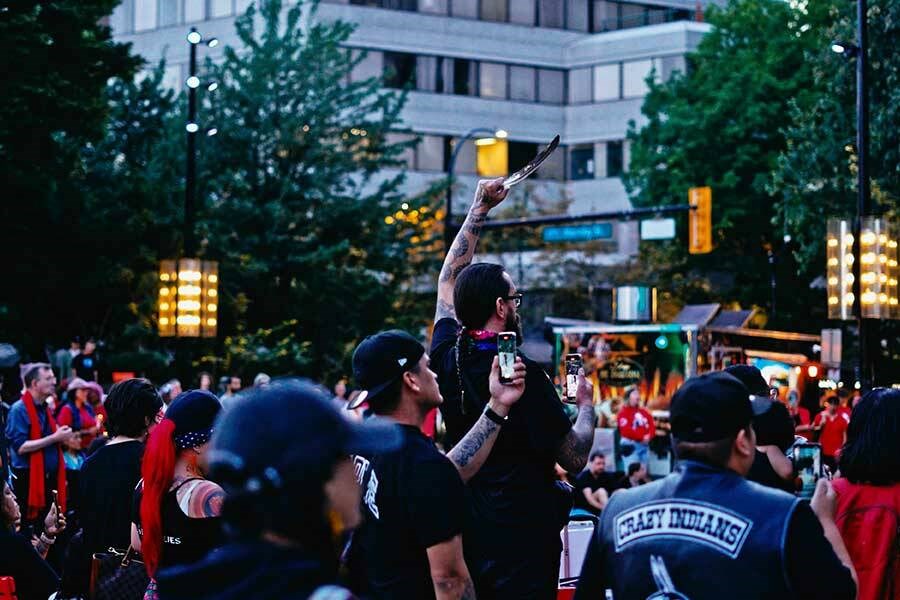Seven films. One theme. The Polygon’s annual Response film series, a culmination of months of creative workshopping by Indigenous burgeoning artists, has returned for its fourth iteration.
As with every year since its inaugural edition in 2020, the project saw its ten participants take part in a series of workshops led by Indigenous artists and knowledge holders throughout the summer. Seven of those will be exhibited throughout March.
This year the theme of All Woven Together, put forth by the program’s lead and the gallery’s TD curatorial fellow Serena Steel, encouraged the artists to ponder the meaning of connection.
“Interconnection is such a large part of so many Indigenous ways of being,” said Steel. “I chose this as a way for the artists to really consider interconnection in a way that is meaningful to them, to think about their shared stories, histories and experiences.”
For some that meant delving into their own personal stories, while others it meant venturing down a more abstract path. The final films range from classic storytelling to pieces that play with meditation and sound, and films that centre around thought-provoking monologues.
Anishinaabe Ojibwe interdisciplinary artist Red Buffalo Nova Weipert connects Indigenous communities reclaiming their culture by dancing and coming together in celebration with a tight knit community being further woven together.
“There is a lot of trauma, but there’s also a lot of perseverance and resilience, and it is our shared stories and shared histories as Indigenous people that contribute to that,” said the two spirit, multidisciplinary artist, whose film contribution pairs digital and traditional mediums with classic storytelling.
“That’s how I took the theme of All Woven Together, the solidarity of other Indigenous communities coming together to just uplift each other.”
With much of the program centred around group project work and learning from one another, the theme extends to areas outside just that of Indigenous ways of being," Steel said.
“The biggest and most rewarding part of the program for me is being able to work with all of these Indigenous and emerging artists, and to be able to connect them with more experienced mentors,” she said. “It’s been such a great way for participants to build their own relationships in the art world, especially for those who are only just leaving university and entering it. Majorly, I’d say, the community building of the program is what I think makes it really special.”
For that reason alone, Weipert encourages budding, Indigenous artists to put their name forward for the annual filmmaking program – not only is it an opportunity to have their work showcased on the big screen, but it is a chance to work and grow alongside like-minded individuals.
“There are some artists who have never done filmmaking, and so this program definitely encourages and empowers Indigenous artists to explore new ways of creating,” they said.
Filmmaking, said Weipert, is “very much a holistic approach to telling stories” and now, more than ever, Indigenous stories deserve their time in the spotlight.
The Response: All Woven Together opening celebration and screening takes place on Friday March 1, at 6 p.m. at The Polygon Gallery. The films will be shown daily from 10 a.m. to 3 p.m., March 2 to March 24 at the gallery.
Mina Kerr-Lazenby is the North Shore News’ Indigenous and civic affairs reporter. This reporting beat is made possible by the Local Journalism Initiative.



